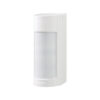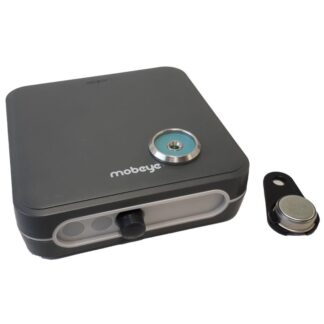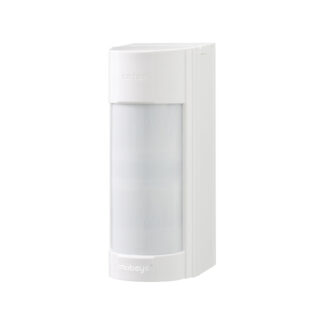PIR represents Passive Infrared. A Passive Infrared Sensor is an electronic device designed to detect infrared (IR) light emitted by objects within its range. Typically, PIR sensors find extensive application in PIR alarms, commonly known as PIR-based motion detectors. Discover our PIR alarms or learn more about PIR with these FAQs.
PIR stands for Passive Infrared. A passive infrared Sensor is an electronic device that measures infrared (IR) light radiating from objects in its field of view. PIR sensors are most commonly used in PIR alarms, or, in other words, PIR-based motion detectors.
A PIR-based motion detector is utilised to detect the movement of people, animals, or other objects. They are frequently employed in intruder alarms and automatically activated lighting systems. These sensors are commonly referred to as “PIR” or sometimes “PID” for “Passive Infrared Detector”.
A Passive Infrared Sensor detects the infrared light radiated by a warm object. All objects with a temperature above absolute zero emit heat energy in the form of radiation. Usually, this radiation isn’t visible to the human eye because it radiates at infrared wavelengths, but it can be detected by electronic devices designed for such a purpose.
A PIR sensor detects moving heat sources. The (Fresnel) lens consists of several parts; once the thermal image (infrared radiation) changes, the detector responds. People and large animals are detected; small animals like insects and spiders are not.
The term ‘passive’ in this instance refers to the fact that Passive Infrared (PIR) devices do not generate or radiate energy for detection purposes. They work entirely by detecting infrared radiation emitted by or reflected from objects. They do not detect or measure “heat”.
Any “moving heat source” can potentially set off an alarm. This implies that drafts, windy areas, and direct sunlight should all be considered as heat sources to avoid. It’s crucial to note that incorrect reports may also arise due to glare, such as a reflection on black leather. In the event of a false alarm, adjusting the alarm system’s position or sensor sensitivity becomes necessary.
Several Mobeye products incorporate a Passive Infrared (PIR) sensor or can be used in conjunction with one as an accessory. The Mobeye Outdoor Alarm CMVXI-R detector, for instance, stands out with its dual detector for verification, effectively filtering out the majority of potential false triggers. This proves especially effective in windy conditions.
The Mobeye CMVXI-R, built on Optex‘s market-leading external PIR, positions itself as a global leader in PIR technology. This unit boasts two detection patterns, both requiring simultaneous triggering to activate the alarm. This design renders the detector highly resistant to false alarms caused by birds, cats, dogs, and similar animals, as these creatures typically won’t trigger both the top and bottom detectors simultaneously.
Digital double-layer detection entails the requirement that both upper and lower detection areas must be crossed simultaneously to trigger an alarm. The two internal PIR sensors autonomously analyse the detection, allowing the filtration of misleading coincidences of events. This technology is highly effective in virtually eliminating detections triggered by smaller animals within the premises.
The Mobeye CMVXI-R is enhanced with a digitally enhanced signal recognition logic known as SMDA. SMDA plays a crucial role in improving immunity against various noise factors, including climate changes and vegetation sways.

 Finding the ideal product to meet your project needs can be challenging. Our products are organised by application to simplify your decision-making process. Choose the application area that fits your needs to see a list of related products.
Finding the ideal product to meet your project needs can be challenging. Our products are organised by application to simplify your decision-making process. Choose the application area that fits your needs to see a list of related products.


